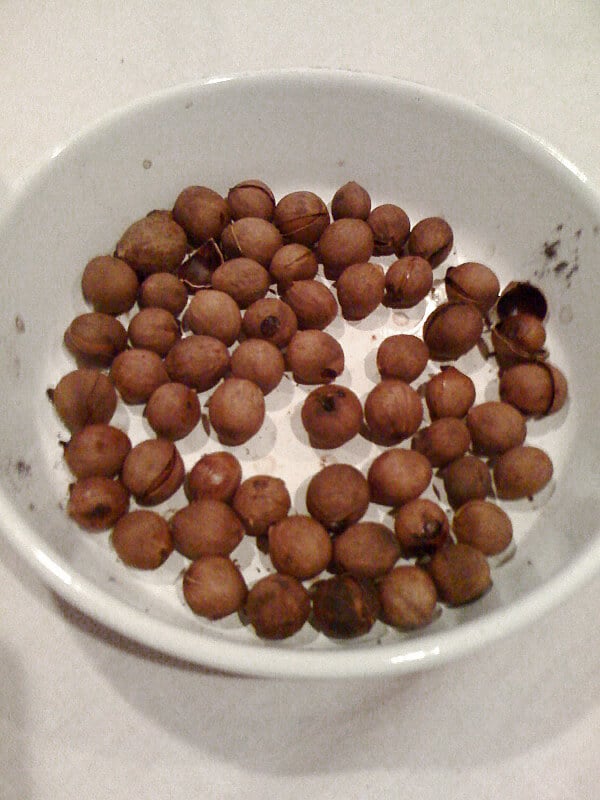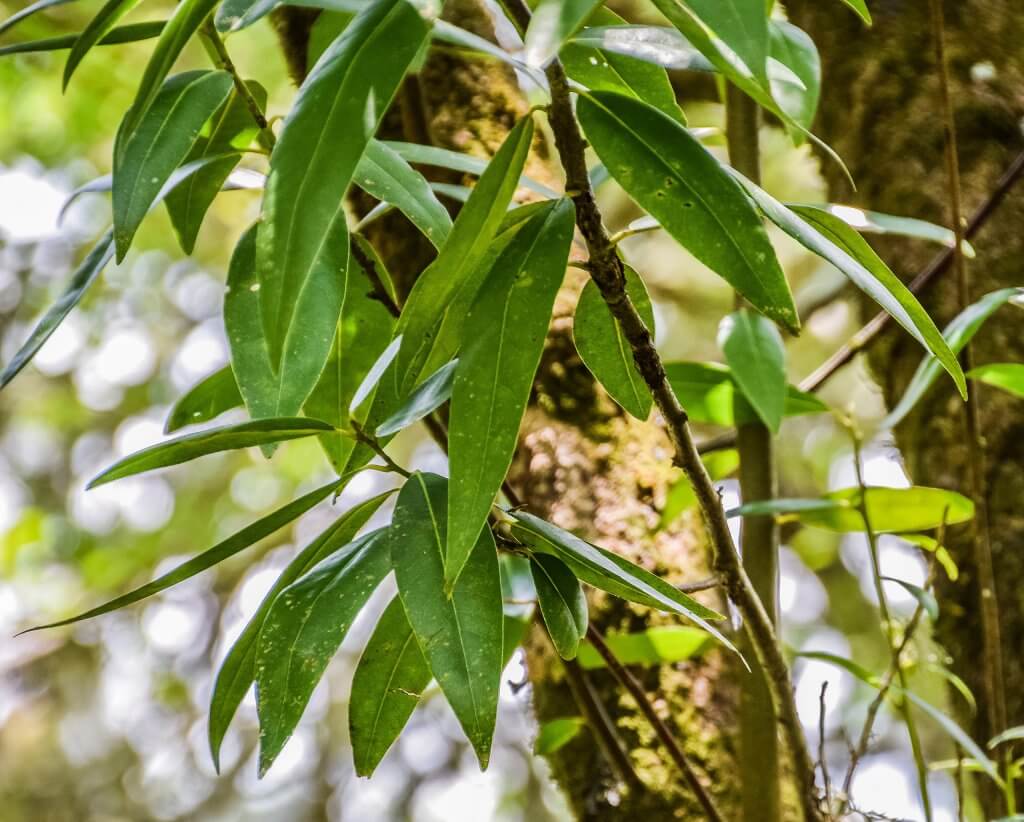California Bay (Umbellularia californica) is an evergreen, hardwood tree native to the Western coastline of America, from Oregon to California. Its distribution can be as far inland as the Sierra Nevada mountains, appearing in redwood forests, woodlands and pine forests. These hardwood trees can grow up to 30m tall with a trunk width of approximately 80cm.
The leaves are particular fragrant, with a scent not too dissimilar from bay leaves. The leaves are long and narrow with smooth edges and a dark green hue, and the flowers are small and yellow. It also bears small green berry like fruits called ‘California Bay Nuts’, which turn purple when matured. Many people liken the fruits to small avocados, this is because the pit is also surrounded by a rich, oily flesh.
California bay has a number of other colloquial names that you may be familiar with. You may recognise it as: Oregon myrtle, pepperwood, California laurel, headache tree, mountain laurel, spicebush and also balm of heaven.

Cultivation and History of California Bay
California Bay has a long history of usage within the Native American culture. They collected the leaves and fruits to use in a variety of recipes and herbal remedies. Today they are no longer cultivated commercially for culinary usage. Therefore only foragers and wild food enthusiasts tend to harvest the leaves.
The tree will grow will in fairly varied conditions, from full sun, to complete shade and a mixture of soil types. As long as the soil is moist and well drained, California bay will thrive.
Many people may choose to grow their own California bay. Seed germination can be difficult but very rewarding. Collect the seed from a fruit and crack it open slightly with a nutcracker, taking care not to destroy the casing. Place the seed within a bag of potting soil and perlite and place into a refrigerator (30-42 degrees Fahrenheit), this mimics the conditions a seed would typically endure outside. You should see a seedling after approximately 85 days, remove the seedling and plant it in a small container. Keep the small plant indoors for about one year, until mature enough for outside planting.
Toxicity
Similar to Mediterranean bay, you cannot digest California bay leaves. So although it isn’t toxic, you should not consume the leaves whole. Inhaling or touching the leaves can occasionally cause irritation in some individuals. The substances umbellulone and safrole are believed to cause this.
Uses

Culinary uses of California Bay
The leaves have a very strong and pungent flavor, similar to the taste of the Mediterranean, Bay Laurel. California bay was commonly used by Native American tribes cultures along Western American. They consumed part of the fruit after a short preparation of drying in the sun. The seed was roasted and eaten whole or ground in a powder and then used to create a drink that resembled unsweetened chocolate. They often used this lightly spiced powder in other recipes and cakes.
Today the fruits, seeds and leaves are not commonly used. Only avid wild plant enthusiasts collect them and you are unlikely to find them in a local supermarket.
Products created with California Bay
Many people use California bay when creating guitars, furniture and other wood worked items. It is a very fine and hard wood, with a range of colors. Many wood work enthusiasts use it to create small household items like bowls, ornaments and spoons.
Medicinal uses of California Bay
The leaves of California bay were once used by Native American people to treat a number of ailments, including rheumatism, stomach aches, colds and sore throats. A tea was created by brewing the leaves in hot water. This infusion would also be used to wash small wounds and sores.

Did you know…
Coins were once created using California bay, to replace a lack of coinage in the town of Bend, Oregon. The coins were used to pay staff and workers, with the promise of being replaced with true coins when the banks re-opened.
Conclusion
California bay, for those wishing to experiment, could harbour a delectable array of flavors and aromas for cooking. From spicing cakes and hot drinks with ground seeds, to using the leaves to add a rich, deep flavor to stews. If you are looking for a greater challenge, consider collecting some of the wood and try your hand at whittling a small bowl or ornament.
—————Written by Hannah Sweet
Hannah is a freelance writer and graphic designer from the UK. With a penchant for travelling, photography and all things botanical, she enjoys writing about a wealth of topics and issues, from conservation and slow living, to design and travel. Learn more about her writing and design services at www.sweetmeanders.co
Many of our readers find that subscribing to Eat The Planet is the best way to make sure they don't miss any of our valuable information about wild edibles.
See our privacy policy for more information about ads on this site






